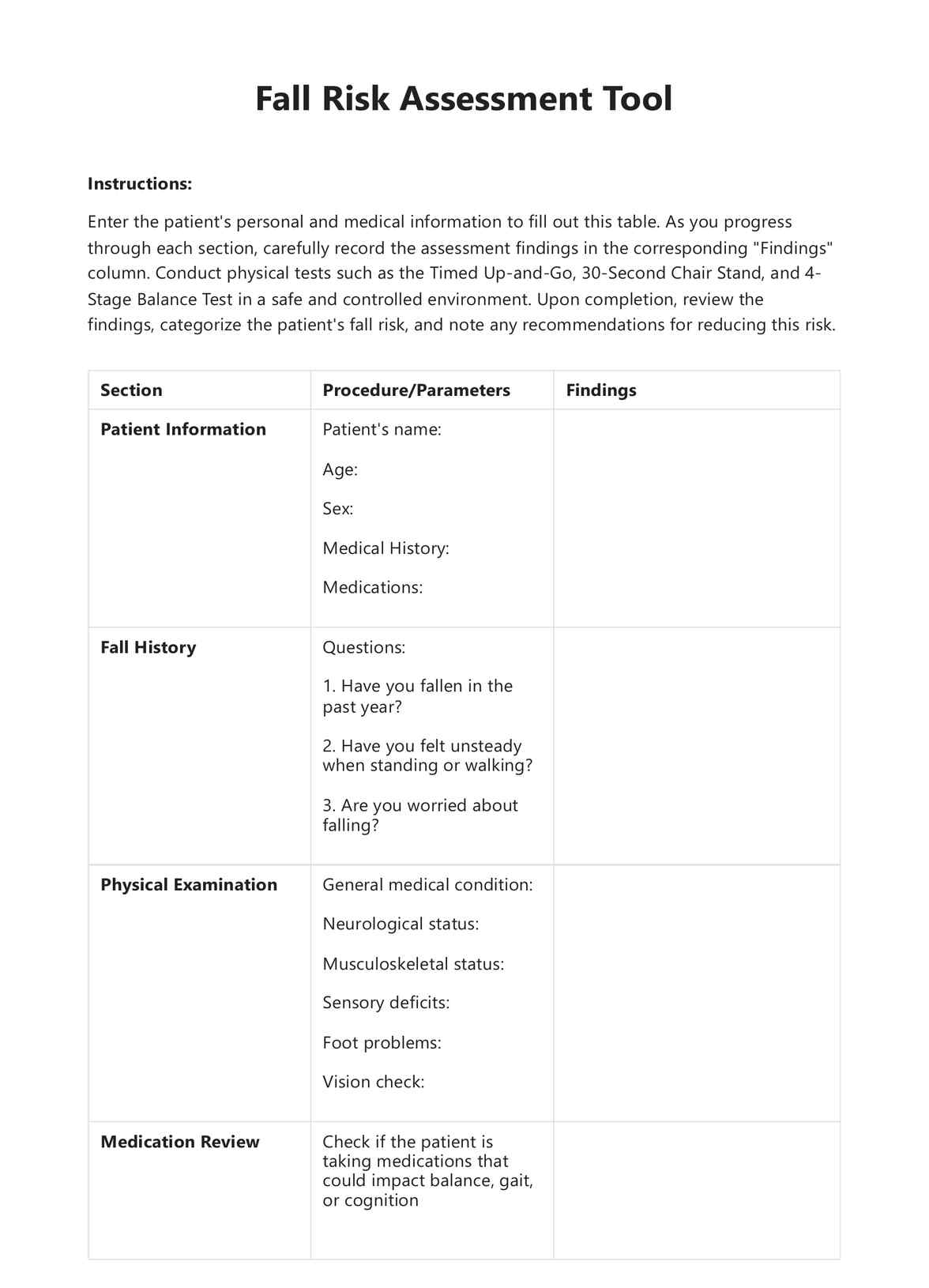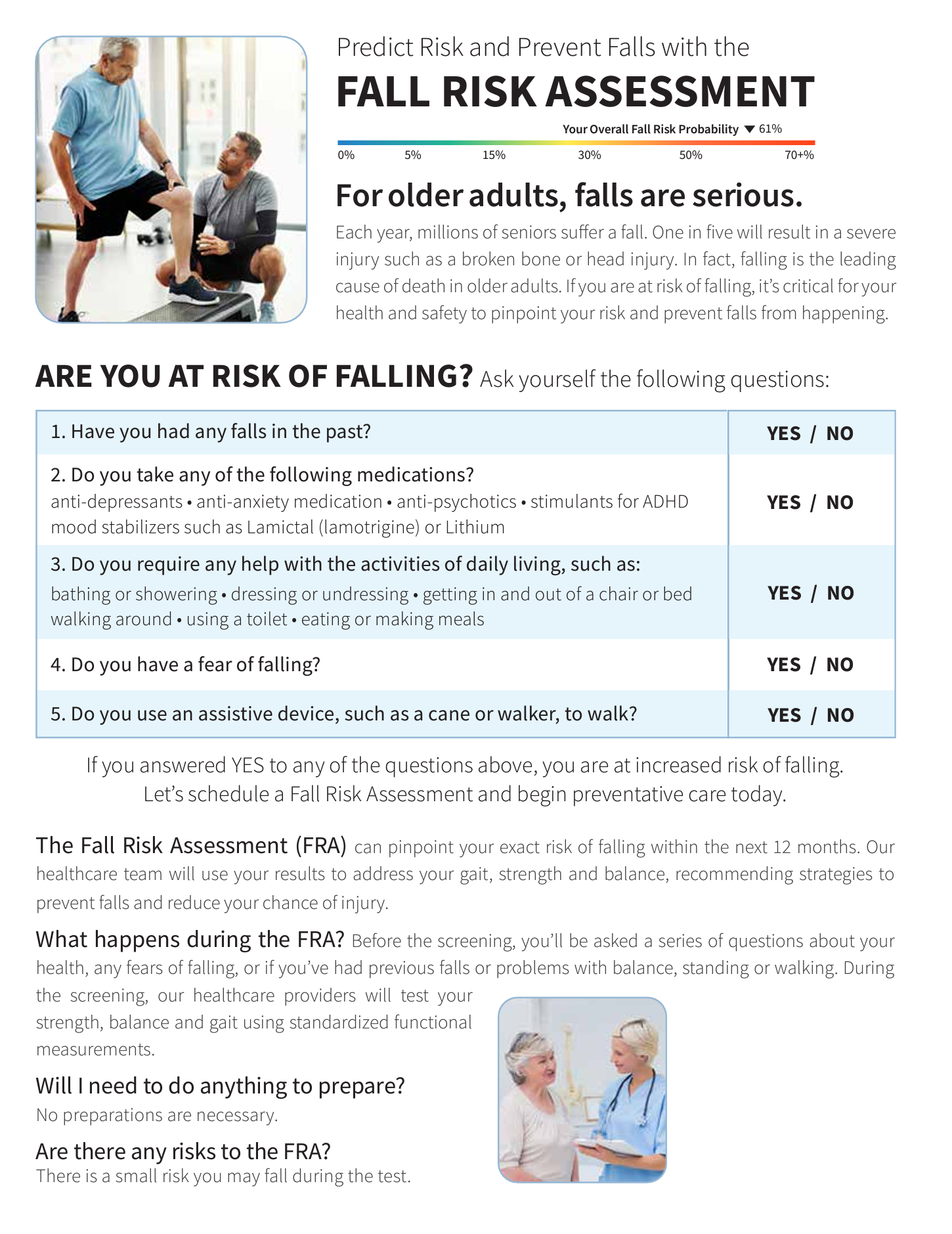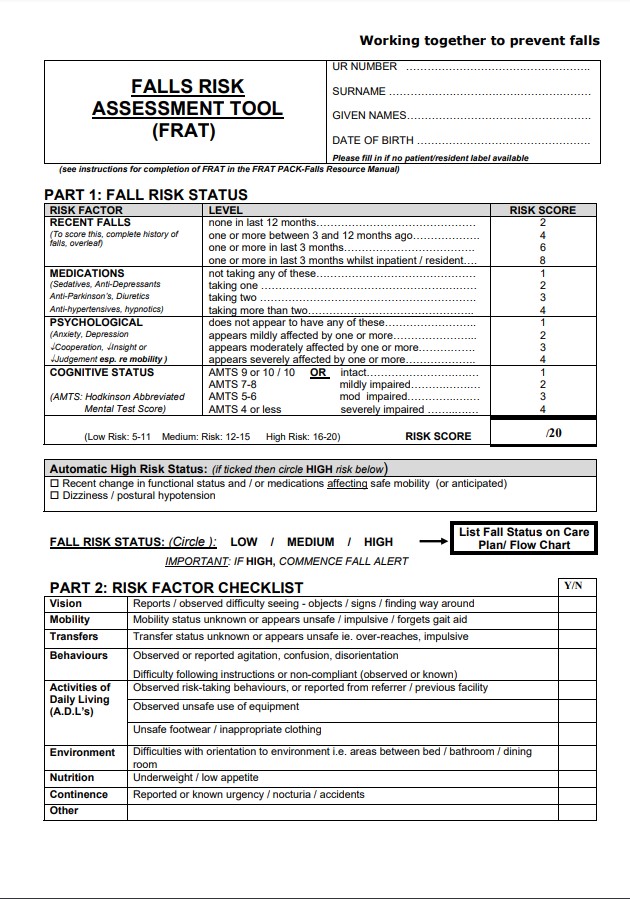Top Guidelines Of Dementia Fall Risk
Top Guidelines Of Dementia Fall Risk
Blog Article
Examine This Report on Dementia Fall Risk
Table of ContentsGetting My Dementia Fall Risk To WorkOur Dementia Fall Risk IdeasThe Main Principles Of Dementia Fall Risk How Dementia Fall Risk can Save You Time, Stress, and Money.
An autumn danger analysis checks to see exactly how likely it is that you will fall. It is mostly provided for older adults. The evaluation normally includes: This consists of a series of questions about your total wellness and if you have actually had previous falls or troubles with balance, standing, and/or walking. These devices check your toughness, equilibrium, and gait (the way you walk).Interventions are referrals that might reduce your risk of falling. STEADI consists of three steps: you for your risk of falling for your danger factors that can be enhanced to attempt to protect against drops (for example, balance troubles, damaged vision) to decrease your risk of dropping by utilizing reliable approaches (for instance, supplying education and learning and resources), you may be asked a number of inquiries consisting of: Have you dropped in the previous year? Are you worried about dropping?
If it takes you 12 secs or even more, it might indicate you are at greater danger for a fall. This examination checks toughness and balance.
Relocate one foot halfway onward, so the instep is touching the big toe of your other foot. Relocate one foot fully in front of the other, so the toes are touching the heel of your other foot.
Dementia Fall Risk Things To Know Before You Get This
Many drops take place as an outcome of numerous contributing variables; as a result, handling the risk of falling starts with determining the aspects that add to drop risk - Dementia Fall Risk. A few of one of the most relevant risk factors consist of: History of previous fallsChronic medical conditionsAcute illnessImpaired stride and balance, reduced extremity weaknessCognitive impairmentChanges in visionCertain risky medications and polypharmacyEnvironmental factors can additionally increase the threat for drops, including: Inadequate lightingUneven or damaged flooringWet or unsafe floorsMissing or damaged hand rails and get hold of barsDamaged or incorrectly equipped equipment, such as beds, wheelchairs, or walkersImproper use assistive devicesInadequate guidance of individuals living in the NF, consisting of those who exhibit hostile behaviorsA effective fall threat monitoring program needs a detailed professional analysis, with input from all participants of the interdisciplinary team

The care strategy need to additionally include treatments that are system-based, such as those that advertise a go to this web-site secure environment (ideal illumination, hand rails, order bars, etc). The efficiency of the treatments must be examined occasionally, and the treatment strategy modified as required to show modifications in the loss danger evaluation. Carrying out an autumn danger monitoring system utilizing evidence-based best practice can minimize the occurrence of falls in the NF, while limiting the capacity for fall-related injuries.
Getting The Dementia Fall Risk To Work
The AGS/BGS guideline suggests try this web-site screening all grownups aged 65 years and older for fall threat yearly. This testing is composed of asking people whether they have dropped 2 or more times in the previous year or looked for clinical attention for a loss, or, if they have not dropped, whether they really feel unsteady when strolling.
People who have actually fallen when without injury ought to have their equilibrium and gait assessed; those with gait or equilibrium abnormalities ought to receive additional evaluation. A background of 1 loss without injury and without stride or equilibrium issues does not require additional evaluation beyond continued yearly fall risk screening. Dementia Fall Risk. A fall danger evaluation is required as part of the Welcome to Medicare exam

Indicators on Dementia Fall Risk You Should Know
Recording a drops history is one of the top quality indicators for autumn prevention and monitoring. Psychoactive medications in specific are independent predictors of falls.
Postural hypotension can frequently be alleviated by reducing the dose of blood pressurelowering medications and/or quiting medications that have orthostatic hypotension as a side impact. Use above-the-knee assistance pipe and sleeping with the head of the bed boosted might also reduce postural decreases in high blood pressure. The suggested look at here aspects of a fall-focused physical evaluation are displayed in Box 1.

A TUG time higher than or equivalent to 12 secs suggests high fall threat. The 30-Second Chair Stand examination evaluates lower extremity strength and equilibrium. Being not able to stand from a chair of knee elevation without utilizing one's arms shows raised loss danger. The 4-Stage Equilibrium examination examines fixed equilibrium by having the patient stand in 4 positions, each gradually extra difficult.
Report this page